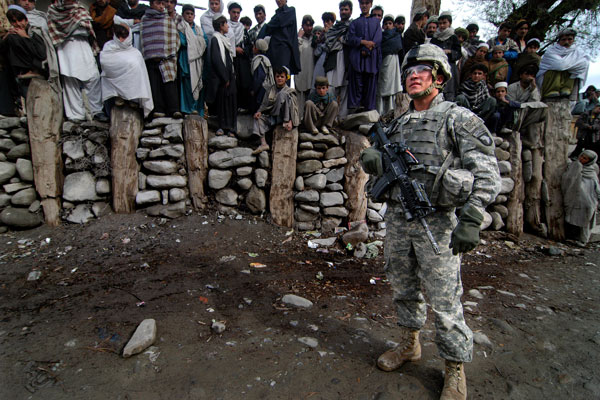Zero Troops in Afghanistan: The Taliban Dream Option
Olivia Enos /
“The zero option is the Taliban dream option. An abrupt drawdown would pave the way for the Taliban to regain influence and cripple the U.S. ability to conduct counter-terrorism missions in the region,” Lisa Curtis of The Heritage Foundation stated in recent remarks at a conference on Afghanistan on Capitol Hill.
Curtis was reacting to the recent announcement that the Obama Administration was considering leaving no troops in Afghanistan after 2014. This sends dangerous signals to the region about America’s staying power and commitment to continuing the fight against international terrorism.
Michael O’Hanlon of the Brookings Institution, another participant in Tuesday’s conference, agreed that maintaining some kind of international troop presence post-2014 is essential to the stability of the Afghan state.
Curtis noted that the U.S. should not repeat the same mistake it made nearly 20 years ago by disengaging abruptly from Afghanistan, especially when so much blood and treasure has been expended in the country over the past 11 years.
“[T]he Afghans already believe the U.S. will cut and run, similar to the way we turned our backs on them over two decades ago when the Soviets left,” said Curtis.
With 2014 fast approaching, it is vital that the U.S. be frank about the number of troops it intends to leave behind. In a recent report, Curtis noted:
Former U.S. Central Command chief General James Mattis made clear in recent remarks to Congress that he hoped the U.S. would leave behind around 13,500 troops and that other NATO nations would leave an additional 6,500 troops. This would bring a total of around 20,000 international forces stationed in Afghanistan beyond 2014 to help with training and advising the Afghan forces.
Without a clear post-2014 U.S. plan, the regional players will start hedging their bets, leading to increased instability and possibly even renewed civil war. On the other hand, if the U.S. handles the military transition from combat to a support role in Afghanistan carefully and responsibly, it will be possible to achieve a measure of stability in Afghanistan that will help protect core U.S. national security interests.

